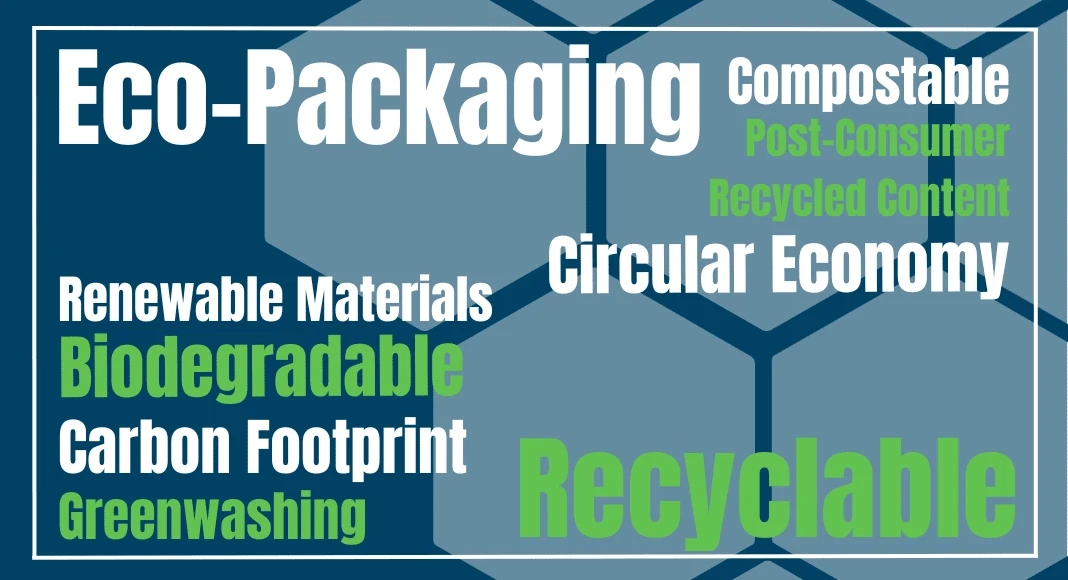As a B Corp Certified Company, we are on a path to reduce the impact of our packaging products and our operations. But as we strive to create more eco-friendly packaging solutions, we’ve found that helping our customers navigate the lexicon can feel like deciphering a secret code, with terms like “recyclable packaging,” “compostable packaging,” and “post-consumer recycled content” taking center stage.
To equip and empower you with the information and knowledge you need to make packaging decision, we’ve curated a list of nine common eco-packaging terms. Once you understand the definitions, we can take the next step in developing packaging that achieves your sustainability goals.
Eco-Packaging
Eco-packaging is a general term that refers to packaging solutions that are claiming to have a lower impact on the environment compared to the standard alternative. Because this term has no exact definition, and does not imply any specific environmental attribute, it’s important to make sure that you understand the exact environmental improvements compared to alternatives. Sometimes this might refer to the raw materials, the energy used to make the package, the carbon footprint of the package, or whether the package can be composted or recycled when after use.
Renewable Materials/Content
Renewable materials are resources derived from sources that can be regenerated or replenished naturally. These materials must also be regenerated quickly enough to replenish current demand and consumption. In the packaging industry, renewable materials include plant-based fibers, such as bamboo, sugarcane, or wood pulp, which can be used as alternatives to non-renewable materials like fossil fuel-based plastics. When evaluating whether to use renewable materials in your packaging, one thing to consider is how much energy and water is used to create the renewable materials. Sometimes the fuel, water, and fertilizer used to produce agriculturally farmed renewable materials can be higher than renewable sources that are grown in forests such as wood pulp.
Recyclable Packaging
Recyclable packaging refers to packaging materials that can be collected, sorted, and processed to be reused. Recycling converts used packaging into raw materials that are used to manufacture new packaging, thereby reducing the need for virgin materials. Recyclable packaging includes materials commonly accepted in curbside recycling programs, such as paper, cardboard, glass and some plastics, though a much smaller portion of plastics are generally able to be recycled. Packaging materials that cannot be processed and recycled within a curbside recycling program should be specified as “industrially recyclable” to avoid consumer confusion.
Biodegradable Packaging
Biodegradable packaging refers to packaging materials that can naturally break down and decompose over time through the action of microorganisms, such as bacteria or fungi. Biodegradable packaging may degrade into smaller components but does not necessarily guarantee a complete return to nature. Compostable packaging is a subset of biodegradable packaging, but not all biodegradable packaging is compostable. There are restrictions on whether and how the term “biodegradable” can be used as a claim in marketing materials because it lacks specificity as to the timeline and conditions of biodegradability. Make sure you understand the technical conditions of biodegradability and have 3rd party validation to support any statements.
Compostable Packaging
According to the Sustainable Packaging Coalition, compostable packaging refers to packaging materials that breaks down into carbon dioxide, water, inorganic compounds and biomass and leave no harmful residues or large remnants. This process should happen at the same rate as natural food decomposition. There are two kinds of compostable packaging, backyard compostable and industrially compostable, so it’s important to specify which one is relevant for your product. When making claims about compostability, make sure to have data to substantiate the claim and it is ideal to received 3rd party validation.
Post-Consumer Recycled Content
Post-consumer recycled content, typically stated as a percentage, refers to the use of packaging material that comes from previously used consumer products, such as recycled paper or plastic. Including post-consumer recycled content in packaging can potentially reduce the demand for virgin materials.
Carbon Footprint
The carbon footprint of a product refers to the total amount of greenhouse gas emissions, measured in carbon dioxide, generated throughout its lifecycle. The carbon footprint takes into account each phase in a product’s life, including sourcing of raw materials, packaging, assembly and distribution, consumer use and disposal. Carbon footprints are typically calculated and reported in metric tons of carbon dioxide equivalent (CO2e).
Circular Economy
According to the Ellen Macarthur Foundation, a circular economy is a model of production and consumption where products and services are designed in a closed loop system and can be endlessly reused or recycled. It is based on three design-based principles:eliminate waste and pollution, circulate products and materials (at their highest value), and regenerate nature. The goal of a circular economy is to inspire innovation that tackles global challenges like climate change, biodiversity loss, waste and pollution.
Greenwashing
Greenwashing happens when a company’s environmental communications mislead the audience by making it appear to have a better environmental profile than in reality. In the packaging industry, greenwashing may occur when brand makes vague, unsubstantiated or exaggerated claims about it’s product or packaging. Some of the most common instances of greenwashing are the use of terms like “eco-friendly” or “sustainable” without explaining how the products are better for the environment.
As the eco-packaging market rapidly grows with new technology and materials, it will become increasingly important to have a common set of definitions and terms to which we can refer. This will enable us all to continue building upon our sustainability goals and creating better packaging for the future.
JBM Packaging helps its customers replace single-use plastic packaging with recyclable, paper-based alternatives. To learn more about our solutions, visit our website or contact us today.




